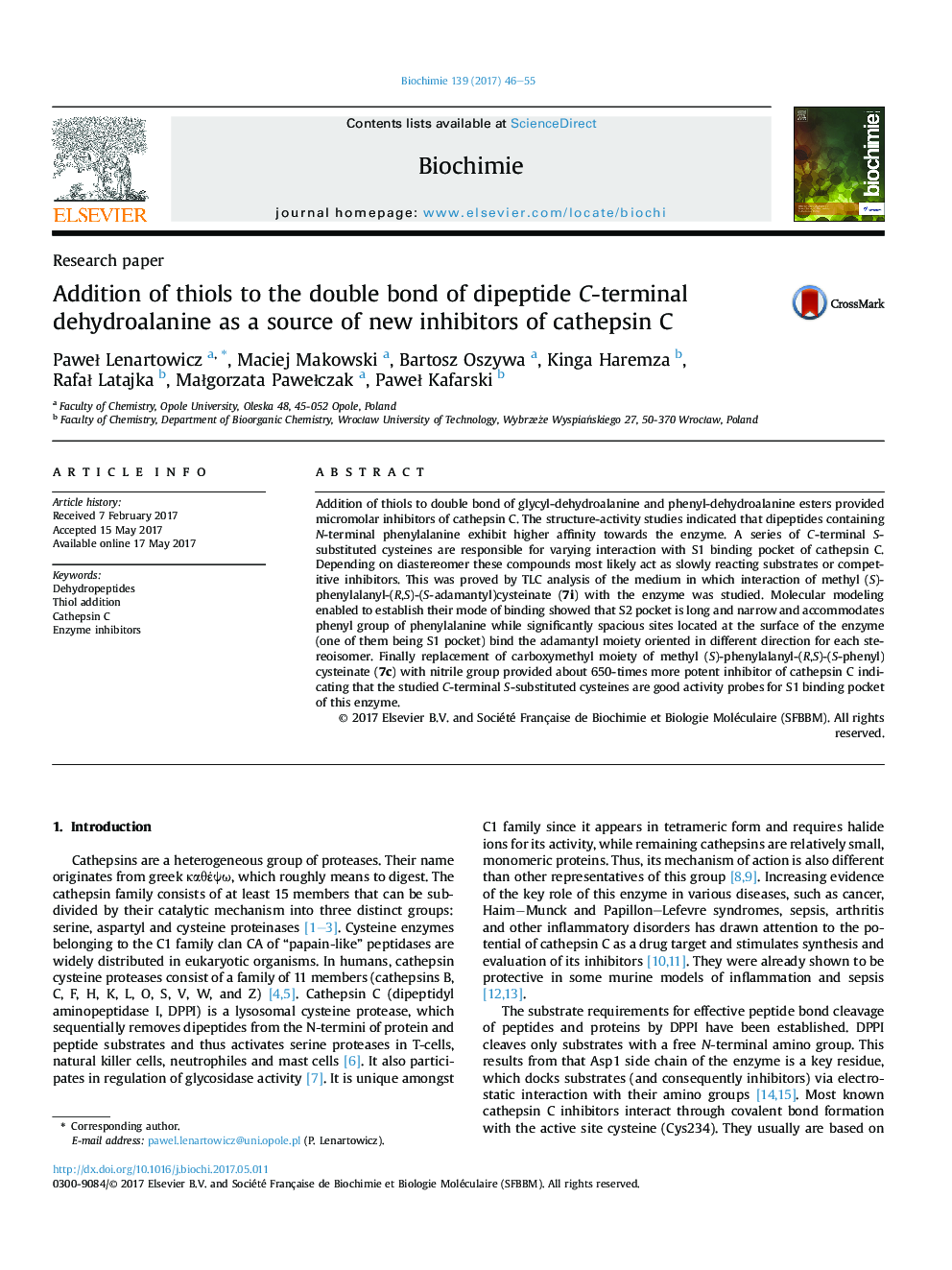| Article ID | Journal | Published Year | Pages | File Type |
|---|---|---|---|---|
| 5508951 | Biochimie | 2017 | 10 Pages |
Abstract
Addition of thiols to double bond of glycyl-dehydroalanine and phenyl-dehydroalanine esters provided micromolar inhibitors of cathepsin C. The structure-activity studies indicated that dipeptides containing N-terminal phenylalanine exhibit higher affinity towards the enzyme. A series of C-terminal S-substituted cysteines are responsible for varying interaction with S1 binding pocket of cathepsin C. Depending on diastereomer these compounds most likely act as slowly reacting substrates or competitive inhibitors. This was proved by TLC analysis of the medium in which interaction of methyl (S)-phenylalanyl-(R,S)-(S-adamantyl)cysteinate (7i) with the enzyme was studied. Molecular modeling enabled to establish their mode of binding showed that S2 pocket is long and narrow and accommodates phenyl group of phenylalanine while significantly spacious sites located at the surface of the enzyme (one of them being S1 pocket) bind the adamantyl moiety oriented in different direction for each stereoisomer. Finally replacement of carboxymethyl moiety of methyl (S)-phenylalanyl-(R,S)-(S-phenyl)cysteinate (7c) with nitrile group provided about 650-times more potent inhibitor of cathepsin C indicating that the studied C-terminal S-substituted cysteines are good activity probes for S1 binding pocket of this enzyme.
Related Topics
Life Sciences
Biochemistry, Genetics and Molecular Biology
Biochemistry
Authors
PaweÅ Lenartowicz, Maciej Makowski, Bartosz Oszywa, Kinga Haremza, RafaÅ Latajka, MaÅgorzata PaweÅczak, PaweÅ Kafarski,
